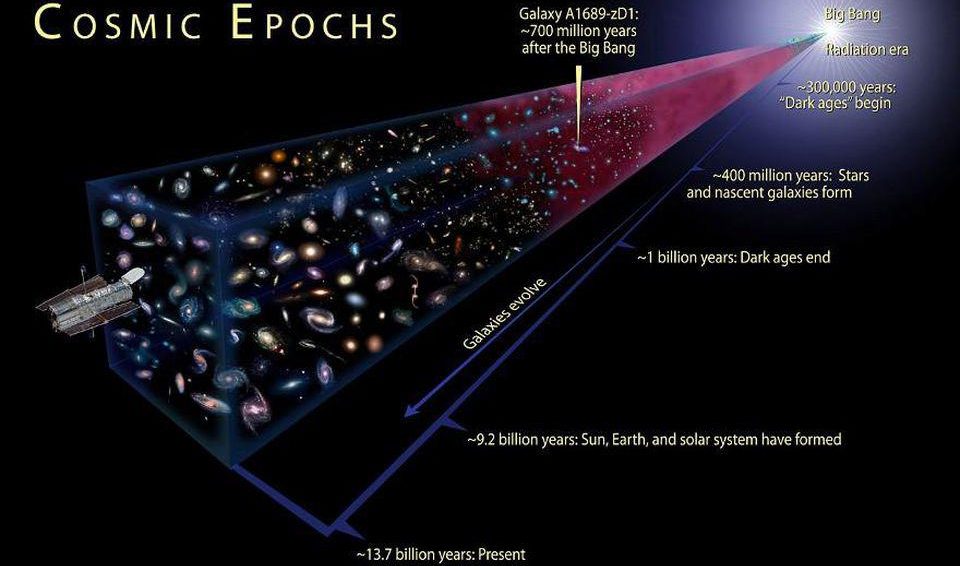10 Deep Lessons From Our First Image Of A Black Hole’s Event Horizon
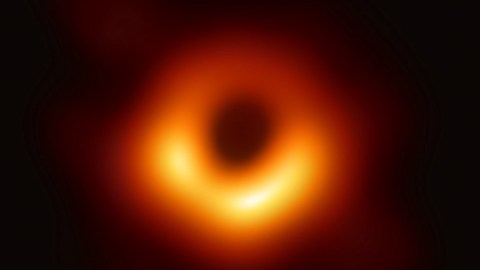
And what do we still have left to learn?
The original idea of a black hole goes all the way back to 1783, when Cambridge scientist John Michell recognized that a massive enough object in a small enough volume of space would render everything — even light — unable to escape from it. More than a century later, Karl Schwarzschild discovered an exact solution to Einstein’s General Relativity that predicted the same result: a black hole.
Both Michell and Schwarzschild predicted an explicit relationship between the event horizon, or the radius of the region from which light cannot escape, and the mass of the black hole as well as the speed of light. For 103 years after Schwarzschild, this prediction went untested. At long last, on April 10, 2019, scientists revealed the first-ever picture of a black hole’s event horizon. Einstein’s theory won again, as did all of science.
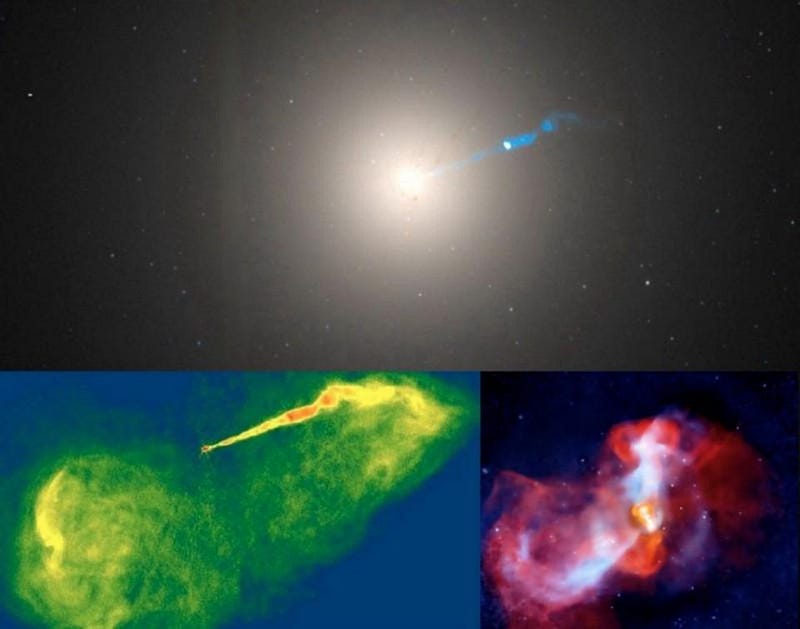
Although we already knew plenty about black holes prior to the first direct image of an event horizon, this new release truly does qualify as a game-changer. There were a bunch of questions we had prior to this discovery, and many of them have now been successfully answered.
On April 10, 2019, the Event Horizon Telescope collaboration released the first successful image of a black hole’s event horizon. The black hole in question comes from the galaxy Messier 87: the largest and most massive galaxy within our local supercluster of galaxies. The event horizon’s angular diameter was measured to be 42 micro-arc-seconds, implying that it would take 23 quadrillion black holes of equivalent size to fill the entire sky.
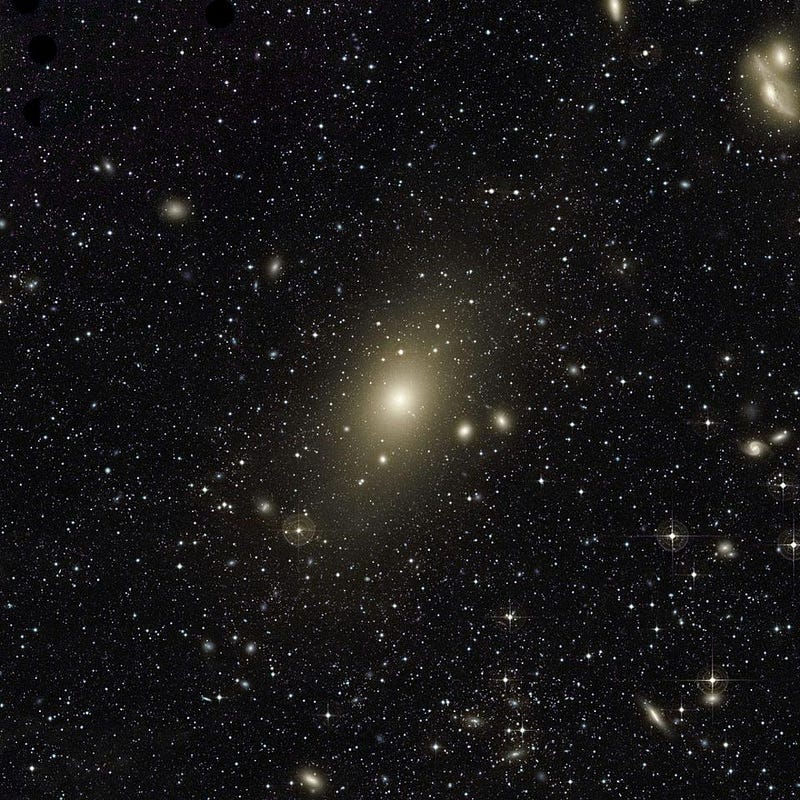
At a distance of 55 million light-years, the inferred mass for the black hole is 6.5 billion times as great as our Sun. Physically, that’s corresponds to a size greater than that of Pluto’s orbit around the Sun. If there were no black hole present, it would take light around a day to travel across the event horizon’s diameter. It’s only because:
- the Event Horizon Telescope has sufficient resolution to see this black hole,
- the black hole is a strong emitter of radio waves,
- and there’s very little foreground radio emissions to contaminate the signal,
that we were able to construct this first image at all. Now that we’ve done so, here are 10 deep lessons that we’ve either learned or are well on our way to learning.
1. This really is a black hole, as predicted by General Relativity. If you’ve ever seen an article with a title like, “theorist boldly claims that black holes don’t exist” or “this new theory of gravity could upend Einstein,” you’ve likely pieced together that physicists have no problem dreaming up alternative theories to the mainstream. Even though General Relativity has passed every test we’ve thrown at it, there are no shortage of extensions, substitutes, or possible replacements.
Well, this observation rules a bunch of them out. We now know this is a black hole and not a wormhole, at least for the most mainstream class of wormhole models. We know there’s a real event horizon and not a naked singularity, at least for many general classes of naked singularities. We know that the event horizon isn’t a hard surface, as the infalling matter would have generated an infrared signature. This is, to the limits of the observations we’ve made, consistent with General Relativity.
However, the observation also says nothing about dark matter, most modified gravity theories, quantum gravity, or what lies behind the event horizon. Those ideas are outside the scope of the Event Horizon Telescope’s observations.
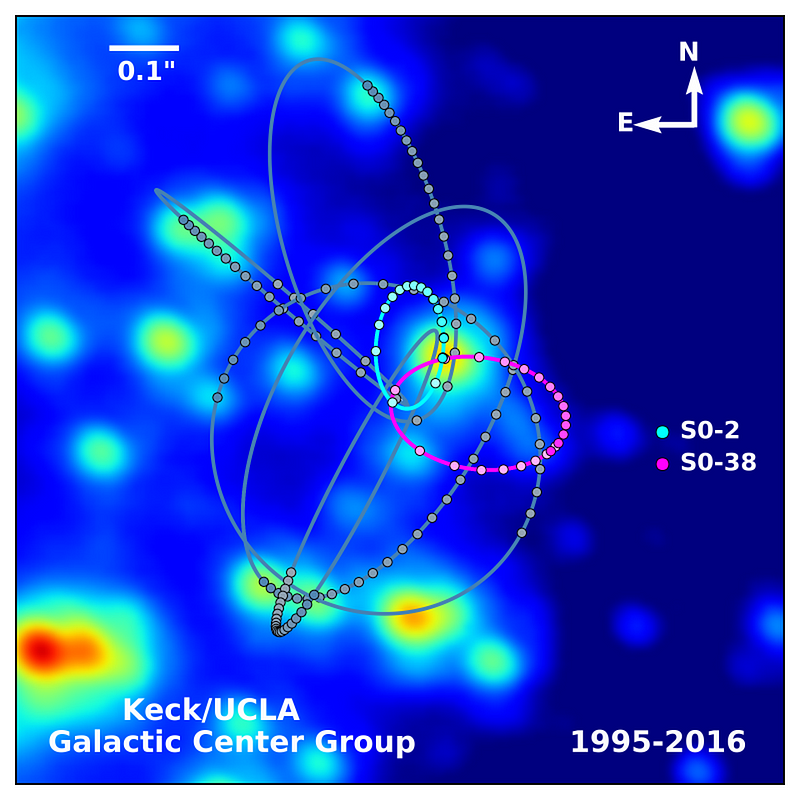
2. Gravitational dynamics of stars give good estimates for black hole masses; observations of gas do not. Prior to the Event Horizon Telescope’s first image, we had a number of different ways of measuring the masses of black holes. We could either use measurements of stars — such as the individual orbits of stars around the black hole in our own galaxy or the absorption lines of stars in M87 — which give us a gravitational mass, or emissions from the gas in motion around the central black hole.
For both our galaxy and M87, these two estimates were very different, with the gravitational estimates being about 50–90% larger than the gas estimates. For M87, the gas measurements indicated a black hole mass of 3.5 billion Suns, while the gravitational measurements were closer to 6.2–6.6 billion. From the Event Horizon Telescope’s results, the black hole weighs in at 6.5 billion solar masses, telling us that gravitational dynamics are good tracers of black hole masses, but inferences from gas are biased towards lower values. It’s a great opportunity to reexamine our astrophysics assumptions about the orbiting gas.
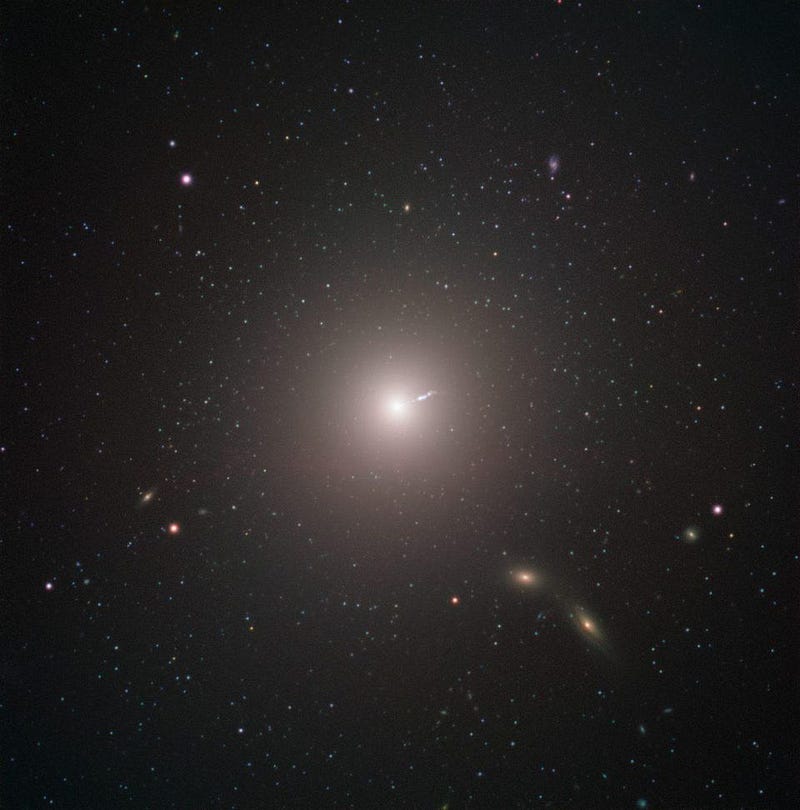
3. This has to be a rotating black hole, and its rotation axis happens to point away from Earth. With observations of the event horizon, the radio emissions surrounding it, the large-scale jet, and the extended radio emissions that were measured previously by other observatories, the Event Horizon Telescope Collaboration has determined that this must be a Kerr (rotating) and not a Schwarzschild (non-rotating) black hole.
There’s no one simple feature we can look at to tease out this nature. Rather, we have to construct dazzling models of the black hole itself and the matter outside of it, and then evolve them to see what occurs. When you look at the various signals that could emerge, you gain the ability to constrain what’s possibly consistent with your results. The black hole must be rotating, and the rotational axis points away from Earth at about 17 degrees.
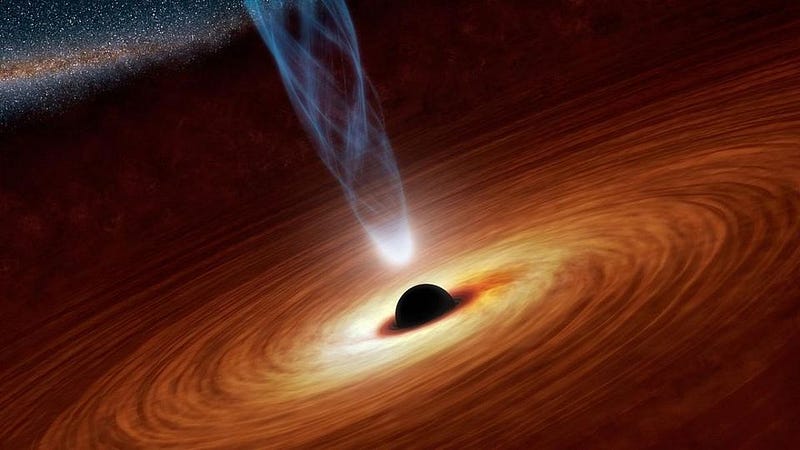
4. We were able to definitively determine that there is matter, consistent with accretion disks and flows, around the black hole. We already knew that M87 had a jet from the optical observations, and that it also emitted radio waves and X-rays. You can’t really get that type of radiation from stars or photons alone; you need matter, and electrons in particular. Only by accelerating electrons in a magnetic field can you get the characteristic radio emission that we’ve seen: synchrotron radiation.
This, too, took an amazing amount of simulation work. By twiddling the various parameters of all possible models, you learn that not only do these observations require accretion flows to explain the radio results, but they necessarily predict non-radio results, such as X-ray emissions. It isn’t just the Event Horizon Telescope that made key observations for this, but other observatories, like the Chandra X-ray telescope. The accretion flows must get hot, as indicated by the spectrum of M87’s central emissions, consistent with relativistic, accelerating electrons in a magnetic field.
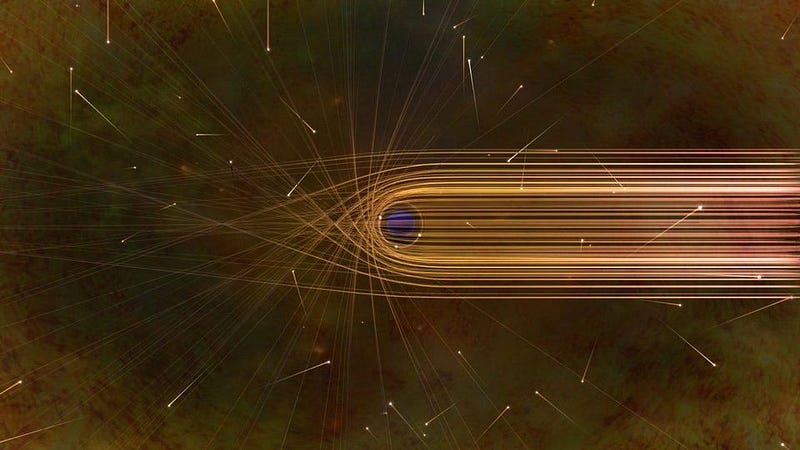
5. The visible ring indicates the strength of gravity and gravitational lensing around the central black hole; again, General Relativity passes the test. That ring of radio doesn’t correspond to the event horizon itself, nor does it correspond to either a ring of orbiting particles. It isn’t the innermost stable circular orbit (ISCO) of the black hole, either. Instead, this ring arises from a sphere of gravitationally lensed photons, which are bent by the gravity of the black hole before traveling to our eyes.
The light is bent into a larger sphere than you’d expect if gravity weren’t so strong. According to the first of six papers released by the Event Horizon Telescope Collaboration,
“We find that >50% of the total flux at arcsecond scales comes from near the horizon, and that the emission is dramatically suppressed interior to this region by a factor >10, providing direct evidence of the predicted shadow of a black hole.”
The agreement between General Relativity’s predictions and what we’ve seen here is another remarkable feather in the cap of Einstein’s greatest theory.
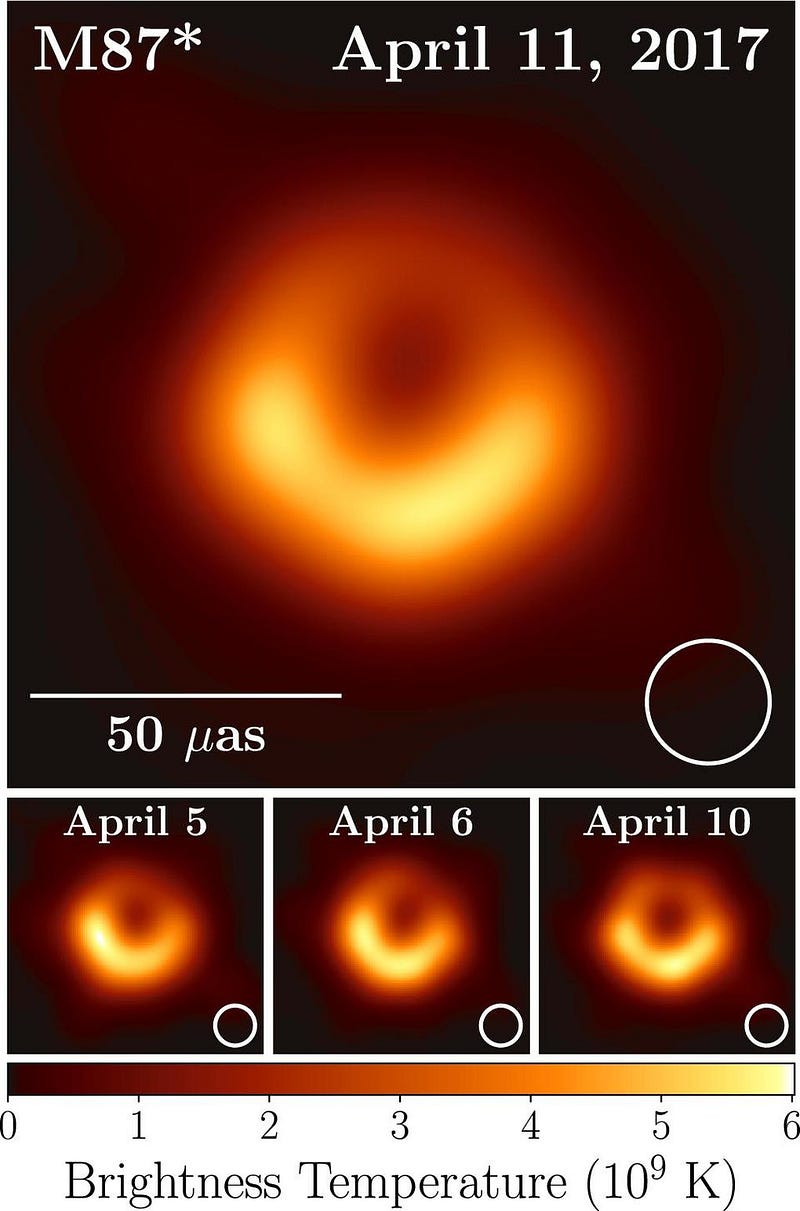
6. Black holes are dynamic entities, and the radiation emitted from them changes over time. With a reconstructed mass of 6.5 billion solar masses, it takes roughly a day for light to travel across the black hole’s event horizon. This roughly sets the timescale over which we expect to see features change and fluctuate in the radiation observed by the Event Horizon Telescope.
Even with observations that span only a few days, we’ve confirmed that the structure of the emitted radiation changes over time, as predicted. The 2017 data contains four nights of observations. Even glancing at these four images, you can visually see how the first two dates have similar features, and the latter two dates have similar features, but there are definitive changes that are visible — and variable — between the early and late image sets. In other words, the features of the radiation from around M87’s black hole really are changing over time.

7. The Event Horizon Telescope will, in the future, reveal the physical origin of black hole flares. We’ve seen, in both X-ray and radio, the black hole at the center of our own Milky Way emit transient bursts of radiation. Although the very first image released was of the ultramassive black hole in M87, the one in our galaxy — Sagittarius A* — will be just as large, but will change on much faster timescales.
Rather than 6.5 billion solar masses, Sagittarius A*’s mass is only 4 million solar masses: 0.06% as great. That means, instead of varying on a timescale of about a day, we’re looking at variability on the timescale of about a minute. Its features will evolve quickly, and when a flare occurs, it should be able to reveal what the nature of those flares are.
How do flares relate to the temperature and luminosity of the radio features we can see? Are there magnetic reconnection events happening, similar to coronal mass ejections from our Sun? Is something being sheared apart in the accretion flows? Sagittarius A* flares daily, so we’ll be able to track the signals associated with these events. If our simulations and observations are as good as they were for M87, and they should be, we’ll be able to determine what drives these events, and perhaps even learn what falls into the black hole to create them.

8. Polarization data is coming, and will reveal whether black holes have an intrinsic magnetic field. While we’ve all certainly been enjoying the first image of a black hole’s event horizon, it’s important to appreciate that an entirely new image is on its way: one that illustrates the polarization of light coming from the black hole. Because of the electromagnetic nature of light, its interaction with a magnetic field will imprint a specific polarization signature onto it, enabling us to reconstruct the magnetic field of a black hole, as well as how that field changes over time.
We know that the matter outside the event horizon, since it’s based on moving charged particles (like electrons), will generate its own magnetic field. Models indicate that the field lines can either remain in the accretion flows, or pass through the event horizon, resulting in the black hole anchoring them. There is a connection between these magnetic fields, black hole accretion and growth, and the jets that they emit. Without the fields, there would be no way for the matter in the accretion flows to lose angular momentum and fall into the event horizon.
Polarization data, through the power of polarimetric imaging, will tell us this. We already have the data; we just need to perform the full analysis.
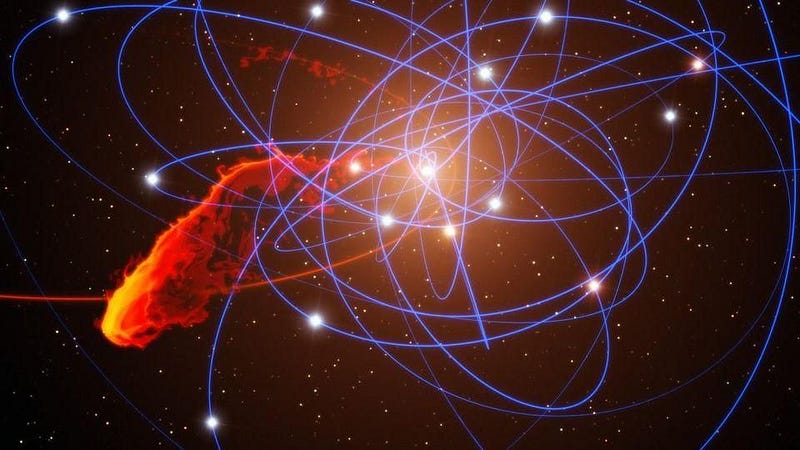
9. Instrumentation improvements to the Event Horizon Telescope will reveal the presence of additional black holes near galactic centers. When a planet orbits the Sun, it isn’t just because the Sun exerts a gravitational pull on the planet. Instead, there’s an equal and opposite reaction: the planet pulls back on the Sun. Similarly, when an object orbits a black hole, it also exerts a gravitational pull on the black hole itself. With a whole slew of masses near the centers of galaxies — and, in theory, many small, unseen black holes are present, too — the central black hole should experience a Brownian motion-like jitter to its position.
The difficulty in making this measurement, today, is that you need a reference point to calibrate your position relative to the black hole’s location. The technique to measure this would involve looking at your calibrator, then your source, then your calibrator, then your source, etc. This requires looking away and then back at your target very quickly. Unfortunately, the atmosphere changes so quickly, on timescales of between 1 and 10 seconds, that you don’t have time to look away and then back at your target. It cannot be done with today’s technology.
But this is a realm where technology is improving incredibly rapidly. The instruments used by the Event Horizon Telescope collaboration are anticipating upgrades, and might be able to achieve the necessary speed by the mid-2020s. This puzzle might be solved by the end of the next decade, all owing to improvements in instrumentation.
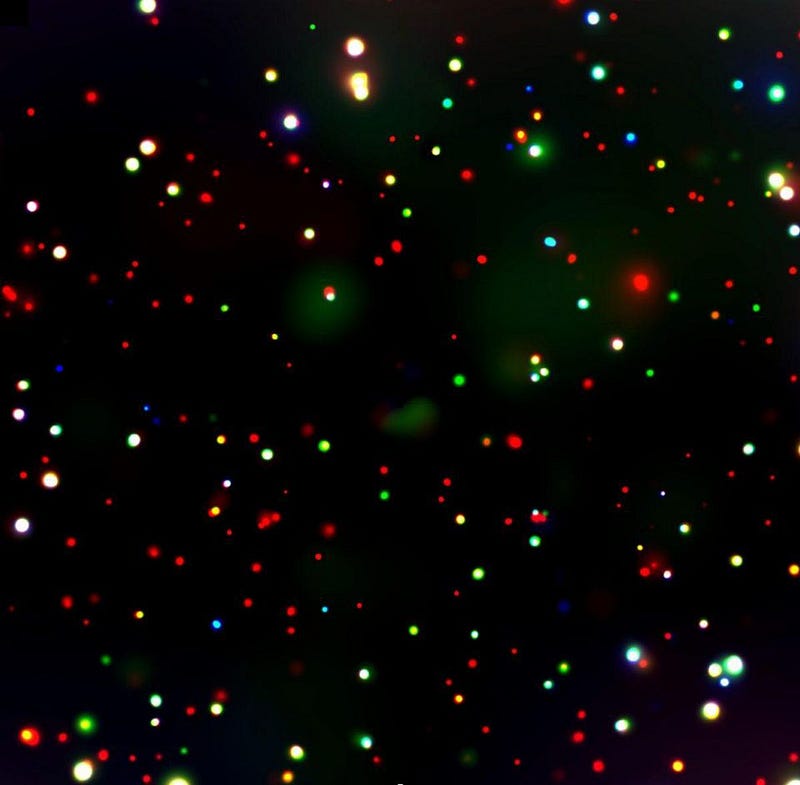
10. Finally, the Event Horizon Telescope may eventually see hundreds of black holes. In order to resolve a black hole, you need your telescope array’s resolving power to be better (i.e., to have higher resolution) than the size of the object you’re looking at. For the current Event Horizon Telescope, only three known black holes in the Universe have a large enough diameter: Sagittarius A*, the center of M87, and the center of the (radio-quiet) galaxy NGC 1277.
But we could increase the power of the Event Horizon Telescope beyond the size of Earth by launching telescopes into orbit. In theory, this is already technologically feasible. In fact, the Russian mission Spekt-R (or RadioAstron) is doing it now! An array of spacecraft with radio telescopes in orbit around Earth would enable far superior resolution to what we have today. If we increased our baseline by a factor of 10 or 100, our resolution would increase by the same amount. And, similarly, as we increase the frequency of our observations, we also increase our resolution, just as more wavelengths of higher-frequency light can fit across the same diameter telescope.
With these improvements, instead of just 2 or 3 galaxies, we could reveal black holes in hundreds of them, or possibly even more. As data transfer rates continue to increase, rapid downlinking might be possible, so we wouldn’t physically need to return the data to a single location. The future of black hole imaging is bright.
It’s important to recognize that we absolutely could not have done this without a global, international network of scientists and equipment working together. You can learn even more about the detailed story of how this spectacular achievement came to be, as it will be told in a Smithsonian documentary that debuts this Friday, April 12.
Many are already speculating, although it’s too late for this year, that this discovery could lead to a Nobel Prize in Physics being awarded as early as 2020. If this were to happen, candidates for who might be awarded the prize include:
- Shep Doeleman, who pioneered, founded, and led this project,
- Heino Falcke, who wrote the seminal paper detailing how the VLBI technique that the Event Horizon Telescope uses could image an event horizon,
- Roy Kerr, whose solution for a rotating black hole in General Relativity is the foundation for the details used in every simulation today,
- Jean-Pierre Luminet, who first simulated what an image of a black hole would look like back in the 1970s, even suggesting M87 as a potential target,
- and Avery Broderick, who made some of the most important contributions to modeling the accretion flows around black holes.
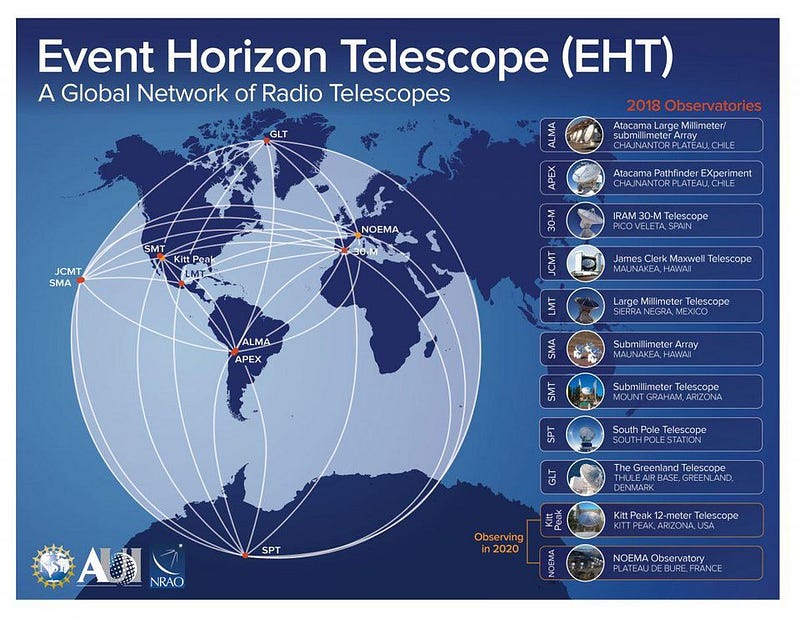
The story of the Event Horizon Telescope is a remarkable example of high-risk, high-reward science. During the 2009 decadal review, their ambitious proposal declared that there would be an image of a black hole by the end of the 2010s. A decade later, we actually have it. That’s an incredible achievement.
It relied on computational advances, the construction and integration of a slew of radio telescope facilities, and the cooperation of the international community. Atomic clocks, new computers, correlators that could link up different observatories, and many other new technologies needed to be inserted into every one of the stations. You needed to get permission. And funding. And testing time. And, beyond that, permission to observe on all the different telescopes simultaneously.
But all of this happened, and wow, did it ever pay off. We are now living in the era of black hole astronomy, and the event horizon is there for us to image and understand. This is just the beginning. Never has so much been gained by observing a region where nothing, not even light, can escape.
The author thanks and acknowledges EHT scientists Michael Johnson and Shep Doeleman for their incredible insights and informative interviews concerning the first results and future possibilities for the science of learning about black holes, event horizons, and the environments that surround them.
Ethan Siegel is the author of Beyond the Galaxy and Treknology. You can pre-order his third book, currently in development: the Encyclopaedia Cosmologica.


